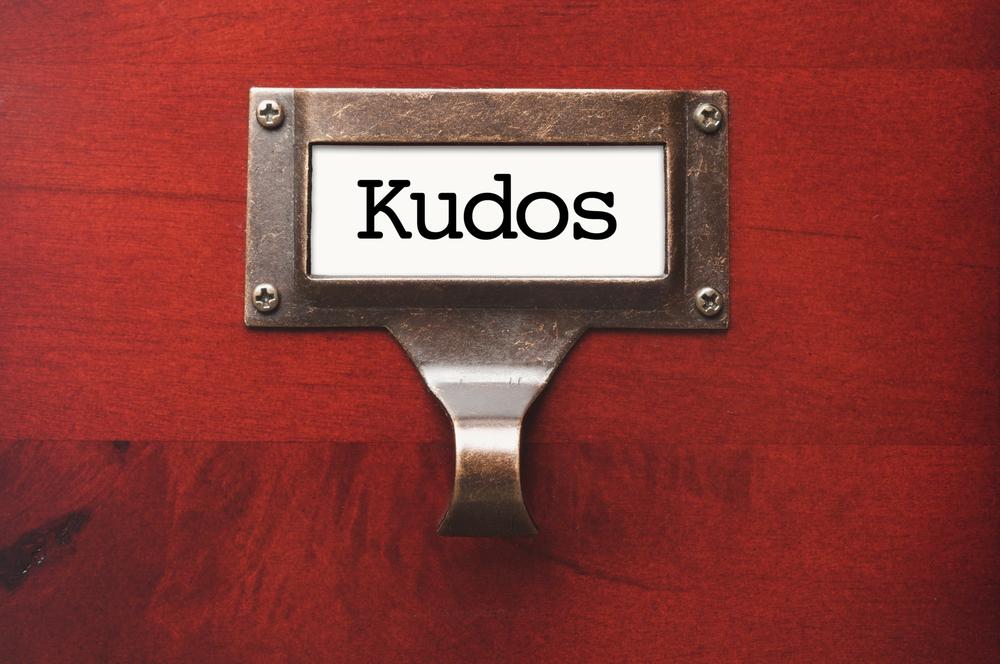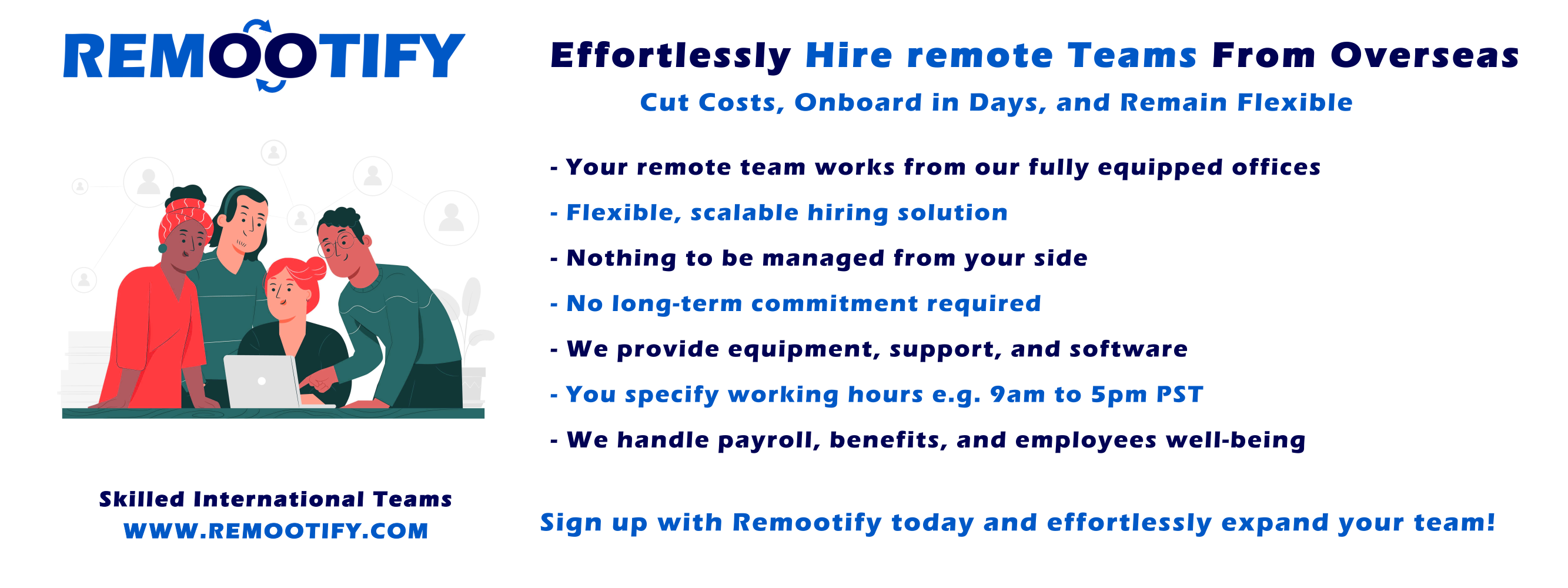Start hiring YOUR REMOTE TEAM, Today!
Enter your information below to start a discussion with one of our team members!

In today’s digital era, the landscape of work has dramatically shifted. Remote work, once a luxury, has become a staple for many organizations.
While this shift offers flexibility, it brings unique challenges, especially in fostering team cohesion and ensuring every member feels valued.
This is where the power of Kudos comes into play, acting as a bridge to connect and appreciate team members across the globe.
A kudo box is in the center of an office where anyone can leave an appreciation message for any employee, which is then collected and shared to recognize employees’ efforts.
“In appreciation, there is clarity and compassion. In gratitude, there is the understanding of kindred souls.” – Amit Ray
Understanding Kudos: More Than Just a Card
What is a Kudo Card?
A Kudo Card is not just a piece of paper or a digital shout-out. It’s a heartfelt gesture, a tangible token of appreciation. It’s a way to say “thank you” or “well done” to a colleague, making them feel seen and valued. Read more about the essence of Kudo Cards here.
The Concept of the Kudo Box
Picture this: a box placed centrally in an office or a digital platform where team members can drop their words of appreciation.
This is the Kudo Box, a repository of positive vibes and acknowledgements. It’s a place where kudos are collected, later to be shared or displayed, fostering a culture of recognition.
The Significance of Kudos in a Remote Setting
Physical distance in remote teams can sometimes lead to emotional distance. Kudos act as a bridge, ensuring team members feel connected and appreciated, whether in the same city or on different continents.
The Science Behind Appreciation: Why Recognition Matters More Than You Think
Recognizing and appreciating someone goes beyond just making them feel good. It’s deeply rooted in human psychology and has tangible benefits for both the giver and the receiver.
Brain Chemistry and Recognition:- When we give and receive ‘thank you’ notes or any form of appreciation, our brain produces motivational thought patterns.
This is because the act of being recognized releases dopamine, a neurotransmitter associated with pleasure and reward. Read more about the science behind employee recognition here.
Boosting Morale and Productivity:- A study highlighted by the Harvard Business Review suggests that even a small act of recognition can provide a significant morale boost.
For instance, a simple thank you note at the start of a new quarter can uplift spirits and drive performance.
Retention and Job Satisfaction:- According to WorkTango, people leave jobs primarily because of limited recognition and praise.
81% of employees stated they’re motivated to work harder when their boss shows appreciation.
“To be seen, to be heard, to be valued is a simple human need. It’s what recognition and appreciation are all about.” – Remootify
What are Kudos Examples? The Art of Expressing Appreciation
Kudos examples serve as a guide, helping individuals articulate their appreciation effectively. They remove the awkwardness of “I don’t know what to say” and provide a template for genuine acknowledgement.
Benefits of Kudos Examples:-The Ripple Effect of Recognition
Kudos examples aren’t just templates; they’re catalysts for positive change in the workplace.
Here’s how they make a difference:-
Clarity in Communication:- With a well-crafted Kudos example, the message is clear. There’s no ambiguity, ensuring the recipient understands the appreciation fully.
Boosts Morale:- A well-timed Kudos can uplift spirits, especially during challenging times. It’s a reminder that efforts are noticed and valued.
Fosters a Positive Work Culture:- When Kudos become a norm, it creates an environment where everyone feels valued and recognized. This positivity is infectious, leading to increased collaboration and camaraderie.
Encourages Continuous Feedback:- Kudos examples pave the way for continuous Feedback, ensuring that appreciation isn’t just an annual event but an ongoing process.
“Appreciation can make a day, even change a life. Your willingness to put it into words is all that is necessary.” – Margaret Cousins
Kudos in Action: Real-life Examples that Inspire
Kudos aren’t just theory; they’re practised and cherished in many organizations, big and small. Let’s explore some real-life examples:-
Kudos Examples for Small Businesses:-
- A local bakery sends personalized thank-you notes to its staff for handling the holiday rush efficiently.
- A startup highlighting the ‘Star of the Month’ based on peer Kudos.
- A boutique recognizes employees who go the extra mile with a special Kudos board in the break room.
- A family-run business is hosting a monthly Kudos ceremony, celebrating achievements big and small.
- A small tech firm using a digital platform to send and display Kudos, ensuring remote members are included.
Kudos Examples for Large Businesses:-
- A multinational corporation using a dedicated app for Kudos, integrating it with their HR system.
- A large retail chain hosts a yearly ‘Kudos Gala,’ celebrating the most heartfelt Kudos given and received.
- A tech giant is incorporating Kudos into performance reviews, ensuring it’s a key metric.
- A healthcare conglomerate is encouraging departments to exchange Kudos, fostering inter-departmental appreciation.
Kudos Examples for Remote Teams
Remote teams, by their very nature, face unique challenges. The lack of physical presence can sometimes lead to feelings of isolation or being out of the loop.
In this context, Kudos become more than just tokens of appreciation; they’re essential tools to foster connection, unity, and motivation.
Here are some examples of how Kudos can be effectively used in remote teams:-
1-Virtual Kudos Wall on Trello:- Teams use platforms like Trello to create a Kudos Wall, where members can pin their appreciation. This visual representation ensures that recognitions are visible to all, fostering a sense of community.
2-Weekly Kudos Shout-out Sessions on Zoom:- Starting virtual meetings with a segment dedicated to Kudos can set a positive tone. It’s an opportunity for team members to acknowledge and appreciate their peers publicly.
3-Slack Bots for Instant Kudos:- Integrating bots in team communication tools like Slack can facilitate instant Kudos giving. With a simple command, team members can send a Kudo, ensuring the moment of appreciation isn’t lost.
4-Quarterly ‘Kudos and Coffee’ Virtual Meet-ups:- Organizing a dedicated virtual meet-up with a pure agenda to share and celebrate Kudos can be a refreshing break from work discussions. It’s also an opportunity for team bonding and getting to know each other better.
5-Digital Kudos Box on Platforms like DailyBot:- A centralized platform where team members can drop their Kudos, which are shared regularly. It ensures that even in a digital space, the essence of the Kudo Box is retained.
6-Monthly Kudos Newsletter:- A monthly newsletter highlighting the best Kudos of the month can be a great way to recap and celebrate achievements. It also serves as a reminder for those who might have missed out on giving or receiving Kudos.
7-Kudos Challenges:- Introducing monthly or quarterly challenges where team members are encouraged to send out a specific number of Kudos can gamify the process. It can increase participation and ensure that appreciation becomes a regular activity.
8-Integration with Performance Reviews:- Incorporating Kudos into performance reviews can provide a holistic view of an employee’s contributions. It’s a testament that peer recognition is as valuable as managerial Feedback.
Tips for Effective Kudo Giving:- Making Every “Thank You” Count
Giving a kudo is an art. It’s more than just saying, “Good job.” It’s about making the recipient feel genuinely valued and appreciated. Here are some actionable tips to make your kudos more impactful:-
1-Be Genuine:- Authenticity is critical. Ensure your kudos come from the heart and are not just a routine gesture. A genuine word of appreciation is always more impactful than a generic one.
2-Be Specific:- Instead of saying “Good job,” pinpoint what you appreciate. For instance, “Great job on the presentation. The visuals were particularly engaging!” is more meaningful.
3-Encourage Peer-to-Peer Recognition:- While managerial recognition is essential, peer recognition can be even more impactful. Encourage team members to appreciate each other. This fosters a culture where everyone feels valued.
4-Use a Mix of Public and Private Appreciation:- While some team members might love public recognition, others prefer a private note of thanks. Understand your team’s preferences and act accordingly.
5-Regularly Update Your Kudos Examples:- As teams evolve, so should the ways you appreciate them. Regularly updating your kudos, examples ensures they remain relevant and engaging.
“Recognition is not a scarce resource. You can’t use it up or run out of it.” – Susan M. Heathfield
For more insights on effective kudo giving, check out this article on How to Gather and Give Kudos in 2023.
Tips on Using Kudos Examples: Leveraging Templates for Maximum Impact
Kudos examples are more than just templates; they guide adequate appreciation.
Here’s how to leverage them for maximum impact:-
1-Customize the Template:- While kudos examples provide a framework, always add a personal touch. Customize them to suit the recipient and the situation.
2-Use a Variety of Examples:- Don’t stick to just one type of kudos. Use a mix of examples to ensure your appreciation remains fresh and engaging.
3-Seek Feedback:- After using a kudos example, seek Feedback from the recipient. This can help you understand what works and what doesn’t, allowing you to refine your approach.
4-Share Kudos Examples:- Encourage team members to share their favorite kudos examples. This can provide fresh perspectives and new ways to appreciate.
FAQs: Quick Answers for the Curious Mind
Navigating the world of Kudos, especially in a remote setting, can be filled with questions.
Here are some frequently asked questions, answered for clarity:-
What are Kudos, and why are they important?
Kudos are tokens of appreciation, often in cards or digital shout-outs. In a remote setting, they bridge the gap of physical distance, ensuring team members feel valued and connected. They foster a positive work culture and boost morale.
How do I implement a Kudo system in my remote team?
Start with understanding your team’s preferences. Choose a platform, be it physical cards or digital tools like DailyBot. Encourage regular participation and integrate Kudos into team rituals, like meetings or reviews.
Can Kudos replace traditional forms of employee recognition?
While Kudos are impactful, they complement rather than replace traditional forms of recognition. Think of them as a more frequent, informal way of appreciating, while conventional methods can be more formal and periodic.
How often should I give out Kudos?
There’s no hard and fast rule. The key is authenticity. Give out Kudos whenever you genuinely feel someone deserves it. However, encouraging a regular rhythm, like weekly or bi-weekly, can ensure appreciation becomes a habit.
Are there any digital tools to facilitate Kudo giving?
Absolutely! Platforms like Trello for Kudos Walls or Slack and Microsoft Teams bots can facilitate Kudo giving. Tools like Kudoboard also offer dedicated solutions for this purpose.
How can I ensure my Kudos feel genuine and not forced?
The key lies in being specific and personal in your appreciation. Instead of generic praise, pinpoint what you’re appreciating. Also, understanding the recipient’s preference, whether they like public or private recognition, can make your Kudos more impactful.
What’s the difference between a Kudo Card and a Kudo Box?
A Kudo Card is a token of appreciation, whether a physical card or a digital note. The Kudo Box, on the other hand, is a repository, a place where these cards are collected, ready to be shared or displayed.
Conclusion:- The Transformative Power of Kudos in Remote Work
In the vast landscape of remote work, where physical distances sometimes lead to feelings of isolation, Kudos emerge as powerful connection tools.
They bridge gaps, foster unity, and create a culture where every team member feels seen, heard, and valued.
As we navigate the challenges and opportunities of remote work, let’s remember the power of a simple “thank you.” Let’s harness the potential of Kudos to create workspaces that resonate with positivity, appreciation, and genuine human connection.





